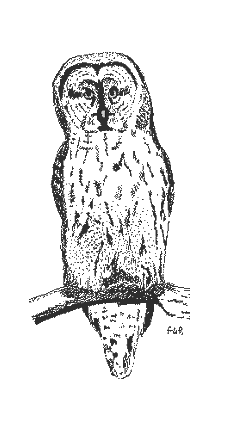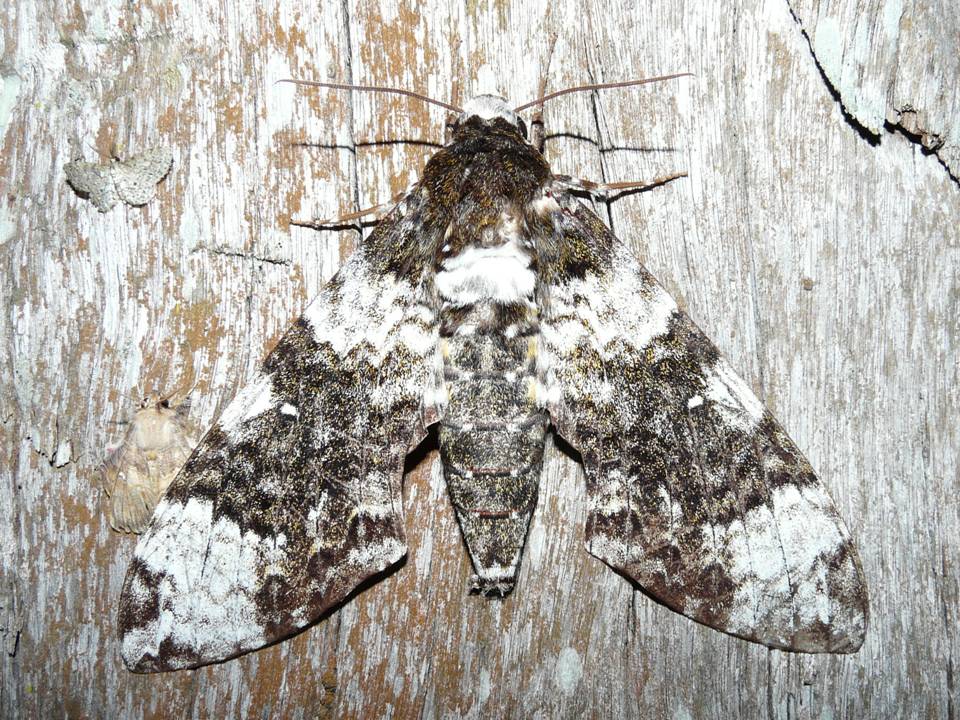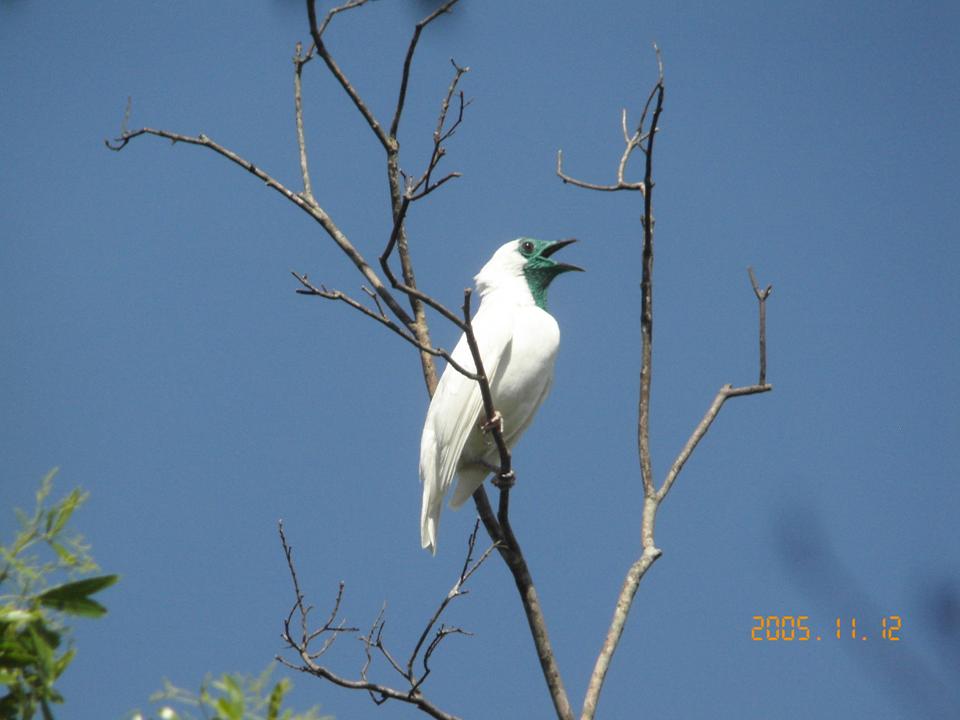Designed by Paul Smith 2006. This website is copyrighted by law.
Material contained herewith may not be used without the prior written permission of FAUNA Paraguay.
Photographs on this web-site were taken by Paul Smith and Hemme Batjes and are used with permission.
MBARACAY┌ SHORT BREAK
Introduction:
A model reserve and perfectly-preserved Atlantic Forest make for some exciting birding. With over 400 bird species occurring in the reserve, as well as a healthy population of Jaguar, tapir and other large mammals, the possibilities for what you might encounter during your short break here are endless. Birders will be keen to track down the earsplitting Bare-throated Bellbird, the prehistoric-looking Black-fronted Piping-Guan and the charismatic Helmeted Woodpecker. Non-birders will just be gobsmacked at the awesome diversity of plant and animal life on display.
Bare-throated Bellbird. (right) Procnias nudicollis
FAUNA Paraguay tours are recommended by:
FAUNA Paraguay eco-tours are promoted by:
|
|
|
|
 |
Birdfinders |
|
Main Targets:
We will prioritise the localised species for which Mbaracay˙ is famous, these being the Bare-throated Bellbird, Helmeted Woodpecker, Black-fronted Piping-guan, Russet-winged Spadebill and Scaled Pigeon in the forest. In the cerrado our main targets will be Rufous-winged Antshrike, Collared Crescentchest and White-winged Nightjar. Strange-tailed Tyrant is our main target at Arroyos y Esteros.
Recommended duration:
To get the best from this tour we suggest at least 4 days. Additional days will increase the species list and give additional time for finding the rare target birds.
Best time to visit:
This tour is available year round. The "rainy season" is from October to November when mud can occasionally be a problem and there are more insects around.
Itinerary:
Day 1 - Early visit to Arroyos y Esteros and continue to Mbaracay˙. Night drive.
Day 2 - All day birding and wildlife-watching at Jejui-Mi. Night drive.
Day 3 - Morning birding and wildlife-watching at Lagunita, afternoon at Aguara Đu. Night drive.
Day 4 - Morning birding and wildlife-watching at Jejui-Mi. Return to Asunciˇn and end of services.
(Itineraries are subject to change according to levels of animal activity or client┤s preference.)
What else might we see?:
Listed by WWF amongst the 100 sites on earth that are of highest conservation priority, the Mbaracay˙ Biosphere Reserve is one of Paraguay┤s most famous protected areas. The second largest remaining block of Atlantic Forest left in the country, it also counts on a substantial area of threatened cerrado habitat. Over 400 bird species have been recorded at this globally-important reserve, amongst them almost all the Atlantic Forest endemic species found in Paraguay and a series of globally-threatened species that are difficult or impossible to see elsewhere.
We begin our trip in Asunciˇn and en route to Mbaracay˙ we┤ll make a stop over at Arroyos and Esteros, a great place to observe the charismatic but highly-threatened Strange-tailed Tyrant. There a host of other wetland birds here too, Maguari Stork, countless herons, Rusty-collared and Tawny-bellied Seedeaters, Crested Doradito, Long-tailed Reedfinch, Limpkin and many more. Once the ticks start to try up here we┤ll continue on to Mbaracay˙, our base for the next three days.
The forest at Mbaracay˙ throws up so many possibilities that space allows us to mention only a small sample of the Atlantic Forest birds that we may encounter here. The call of the Bare-throated Bellbird (Guyra Pong), Paraguay┤s national bird, rings out across the forest, while threatened forest inhabitants that will be high on our list include Helmeted Woodpecker and the extraordinary Black-fronted Piping-Guan. Saffron and Spot-billed Toucanet are always popular with visitors, but both are overshadowed by the larger Red-breasted Toucan. Other eyecatching forest inhabitants include Plush-crested and Purplish Jay, Rufous-capped Motmot, Surucua Trogon, Yellow-fronted Woodpecker, Blue, Band-tailed and White-bearded Manakins and myriad tanager species. Reddish-bellied and White-eyed Parakeets are commonly observed, whilst Mbaracay˙ is one of the only places in Paraguay where the extraordinary Scaled Pigeon can be seen. A colony of Red-rumped Caciques located near the accommodation attract Piratic Flycatcher and Giant Cowbird, both species looking to usurp the nest owners. In the forest undergrowth we will look for Black-goggled and Ruby-crowned Tanager, Greenish Schiffornis, and with luck the rare Russet-winged Spadebill. Above our heads Blue Dacnis, Violaceous and Chestnut-bellied Euphonia, Black-capped and Ochre-breasted Foliage-gleaners, Rufous-crowned Greenlet and the unusual Sharpbill will be amongst the species that we may encounter. And of course no visit to South America would be complete without ticking off a few hummingbirds, possibilities include Scale-throated and Planalto Hermit, Violet-capped Woodnymph and Versicoloured Emerald. Another typically Neotropical group are the puffbirds and three species are present - Buff-bellied and White-eared Puffbird and the retiring Rusty-breasted Nunlet. At night Black-capped and Tropical Screech-Owl emerge, alongside more elusive nightbirds such as Ocellated Poorwill, Black-banded Owl and Silky-tailed Nightjar.
In the cerrado at Aguara Đu we┤ll be looking for cerrado specialities such as Rufous-winged Antshrike, Rusty-backed Antwren, Black-throated Saltator, Collared Crescentchest and Curl-crested Jay . Other cerrado birds that we might encounter include Burnished-Buff Tanager, Red-winged Tinamous, White-rumped Monjita, Toco Toucan, Turquoise-fronted Amazon, Plumbeous Seedeater and Red-legged Seriema. After dark nightbirds such as Pauraque, Scissor-tailed and Little Nightjar emerge, but perhaps the biggest after-dark attraction is the endangered White-winged Nightjar. Mbaracay˙ is one of only three sites on earth where this species is known to regularly occur.
Mammals are tough to observe in the forest but are occasionally encountered in the early morning and on night drives. Possible species include Azara┤s Agouti, Crab-eating Fox, Crab-eating Raccoon, Collared and White-lipped Peccary, Maned Wolf and even Jaguar.

What does it include?:
The price includes pick-up from and return to Asunciˇn hotel, accommodation, transport, food, non-alcoholic drinks and guiding fees.
It does not include travel insurance, personal expenses, alcoholic drinks or travel costs incurred before the beginning of the tour or after return to Asunciˇn.
For further information or to book your tour email us at faunaparaguay@yahoo.com.ar
White Plague Sphinx Moth Manduca albiplaga




